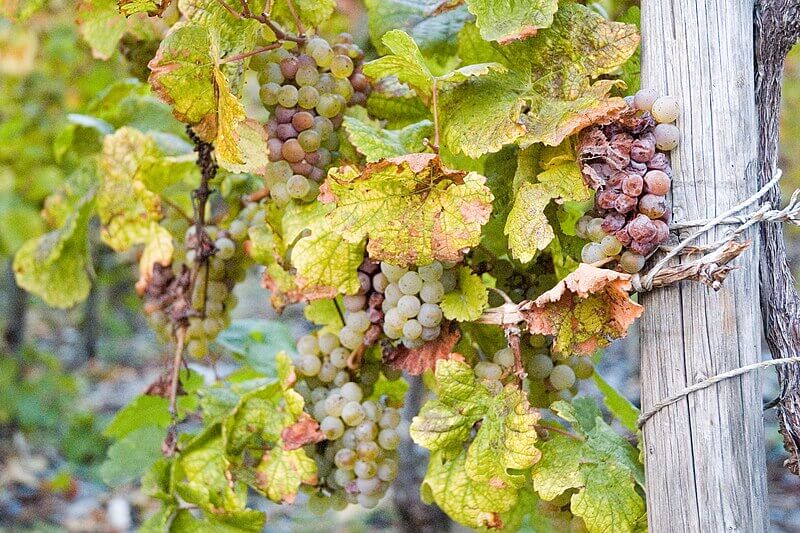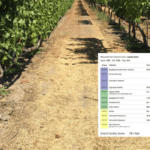The most common vine diseases are the ones caused by fungi. According to the literature, there are more than 60 different species that can infect grapevines. Each fungus develops under certain environmental conditions. The article below describes symptoms and weather conditions for developing the four most common fungus vine diseases.
Downy mildew (Plasmopara viticola)
Downy mildew is one of the most important vine diseases that can cause the complete destruction of grapes and vine vegetation. It infects all aerial parts of the plant from mid-May to late autumn. The rule of thumb is that primary infection occurs when there is at least 10 mm of rainfall and temperatures are at least 10 °C during the 24 hours. In contrast, secondary infection occurs when there is high humidity at temperatures above 13 °C during at least 4 hours of darkness.
Read also: Secondary Infection of Downy Mildew and Spray timing
The disease can be recognized by oil spots and mouldy cover or bright green spots on leaves and white mouldy cover on shoots and inflorescences. Downy mildew can also infect berries that thrive and dry out (they look like brown-purple raisins) or, in a later stage, soften and become brown, violet colour.
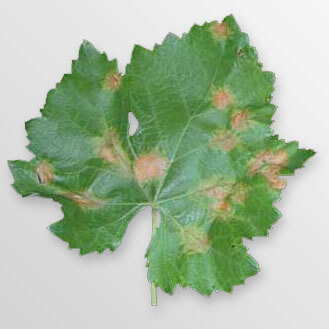
Powdery mildew (Uncinula necator)
Powdery mildew fungus can infect all green parts of the plant. The disease develops throughout the growing season until late autumn. It thrives best in warm, humid and cloudy weather. Ideal conditions for the development of Powdery mildew are hot (25 – 30°C) and humid days.
Read also: Powdery mildew (Uncinula necator)
Symptoms of the infection are mouldy coats on leaves, inflorescences, and rachis. At the early stage of berry development, infected berries are covered with a grey coat and dry out shortly after. When half-ripe berries get infected, they crack and dry out. Canes can also get covered with a grey coating, and an old infection appears as reddish-brown spots.
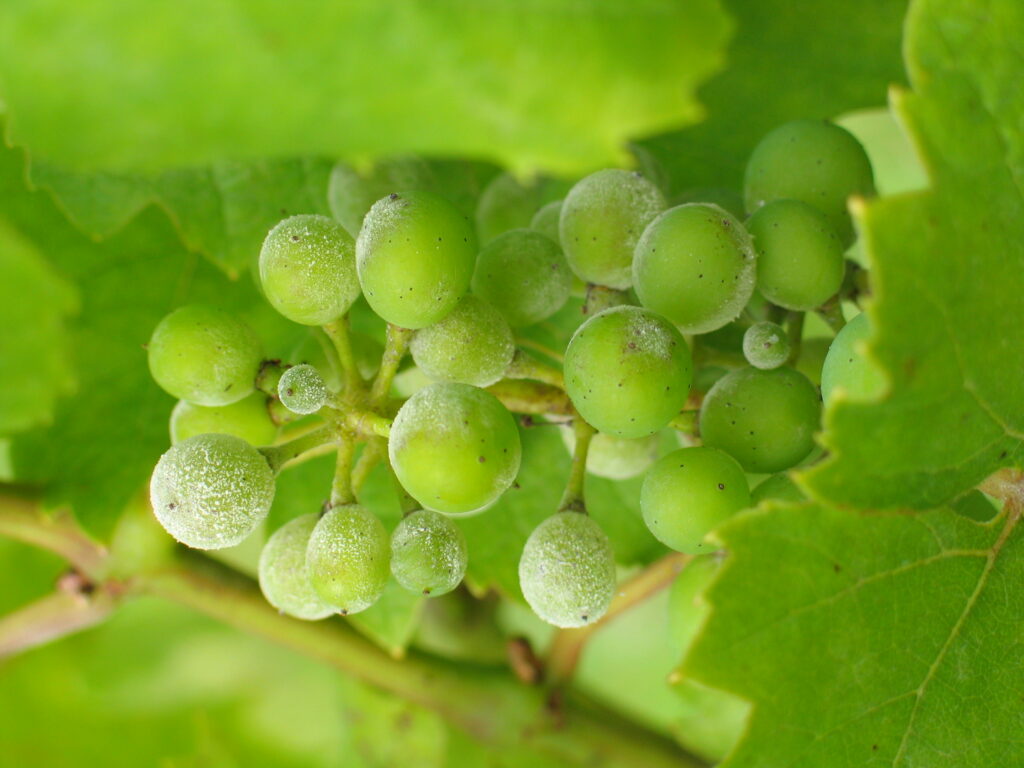
Grey mould (Botrytis cinerea Pers.)
Grey mould disease can develop throughout the whole growing period but most commonly appears near harvest time. Botrytis is more likely to appear in rainy years and excessively fertilized vineyards. The most optimal conditions for disease development are temperatures between 15 and 20°C, free moisture, and high relative humidity.
Read also: Gray mold of grape (Botrytis cinerea Pers.)
Grey mould causes spots on leaves which turn brown and begin to rot. Leaves then start to dry and fall off. It can also infect inflorescences, which rot and dry out. Grey mould does the most damage when it appears on ripe berries. The most obvious symptom of Grey mould is mould that covers berries, which in the last stage shrive and become “mummies” which drop off.
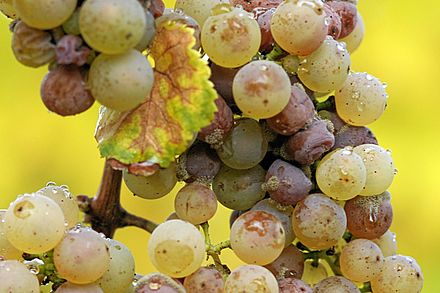
Black rot (Guignardia bidwellii)
Black rot can infect all aerial parts of the plant. Fungus mainly occurs in humid and warm environments from mid-June to late August. Infection develops at the temperature range between 8 and 32°C, and just like with the Downy mildew, the rain increases the possibility of infection.
Read also: Black Rot of Grape (Guignardia bidwellii (Ellis))
The disease can be recognized by round brown spots on leaves and shoots. Shoots then begin to perish and dry out. The fungus causes the most harm to berries in midsummer, when red-brown to grey spots appear on them. Berries quickly lose moisture, shrink, and look like brown-black or blue-brown raisins full of black dots. Fungus does not appear on fully ripe berries.
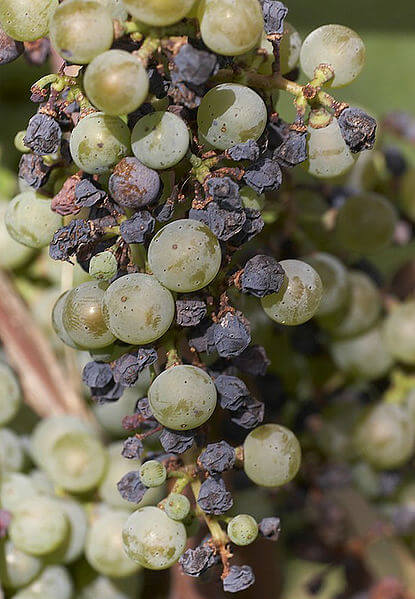
Winegrowers, what are your experiences with the most common vine diseases? Let us know in the comment below!
Sources:
- Different manuals for winegrowing
- Bacon, R., Carisse, O., Lasnier, J., & McFadden-Smith, W. (2006). Identification guide to the major diseases of grapes (Publication No. 10092E). Agriculture and Agri-Food Canada.
- Featured image: by Paul Asman and Jill Lenoble, via Wikimedia Commons

